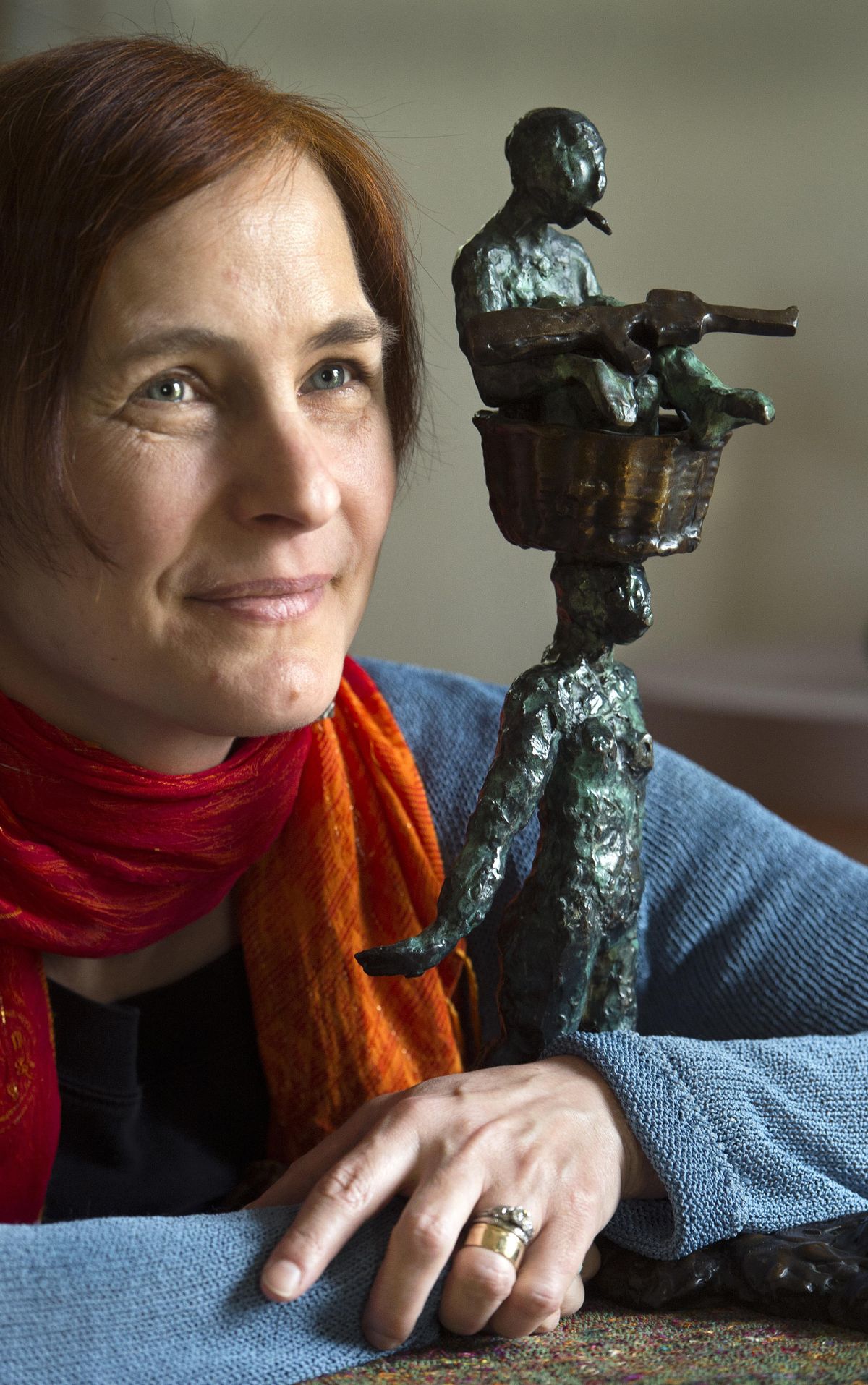Proposed sculpture in Spokane would show toll of war

Ildikó Kalapács grew up in Hungary, when the Eastern European country was under Soviet control. Her grandparents lived and survived through both world wars, the Russian occupation of their country and the Hungarian Revolution of 1956.
So it’s fitting that Kalapács’ latest project focuses on the trauma of war.
If the Spokane Park Board approves the plan next month, Kalapács’ sculpture will be raised on a newer section of the Centennial Trail in Spokane’s West Central neighborhood. Kalapács is also seeking approval from the West Central Neighborhood Council, whose agreement is not needed for the project. She will present her project to the neighborhood on May 11.
The artwork called “Bearing,” Kalapács’ first public sculpture, shows a woman with a basket balanced on her head. A man sits in the basket with a rifle in his lap and a cigarette in his mouth.
“This is all about compassion and healing,” said Kalapács, 50, a longtime Spokane resident who grew up in socialist Hungary and left two years before Soviet control of the country ended. “It is a completely apolitical piece. This is much larger than that. I am interested in the human experience.”
The sculpture, which has not yet been funded or built but will be 7 feet tall when complete, represents the impact war can have not just on soldiers, but also on refugees, and the families and people who remain at home during wartime. Kalapács hopes the sculpture will encourage people to think about the trauma war can leave in its wake.
“Shame and pain are hard to share,” Kalapács said. “I hope this can start conversations and healing. I think there’s a catharsis when we look at images.”
Kalapács said the idea for the sculpture began with her thinking about “women’s role in war.” She said the woman bearing the basket and soldier represent the women who stay home when men go to war, taking on more responsibility and roles in the absence of their husbands, sons, fathers and brothers. When the soldiers return, those who stayed home then must help them deal with “the brutality of war that changed them.”
Art and war are inseparable for her, Kalapács said, noting that her country was ravaged by decades of conflict by the time she was raised under a dictatorship.
“Visual art and folk dance saved me,” she said. She was 22 when she left for the Pacific Northwest with her American husband, Wayne Kraft, who was a professor of German at Eastern Washington University.
Laura Becker, executive director of Spokane Arts, said Kalapács’ sculpture will “promote awareness and understanding, compassion.”
“The piece is about the trauma we deal with after wartime, and that is in the direct experience of our veterans and the families of our veterans, but also the people that help them and support them when they get back,” Becker said. “In my opinion, I think our veteran communities are maybe not tended to the way they should be after duty. But the silent victim in all of that is their family members and the people who support them.”
Becker noted that the city will pay nothing for the sculpture, just supply a place for it to be raised. Kalapács won a Puffin Foundation grant to sculpt a smaller prototype, which led to the current proposal. Kalapács intends to donate the sculpture to the city, but first she must raise $250,000 to build it, which she plans to do through grants and donations. She anticipates having the sculpture in place within two years.
When complete, it will be placed on a piece of land owned by the city’s parks department near the intersection of Summit Boulevard and Bridge Avenue along the Centennial Trail.
Kalapács said she plans for the sculpture to be the first of a series, which will put a replica of the original Spokane piece on each continent. She said she hopes to have one placed in Nishinomiya, Japan, which became Spokane’s first sister city in 1961.
“We feel we have immense support,” Kalapács said. “Enormous support.”